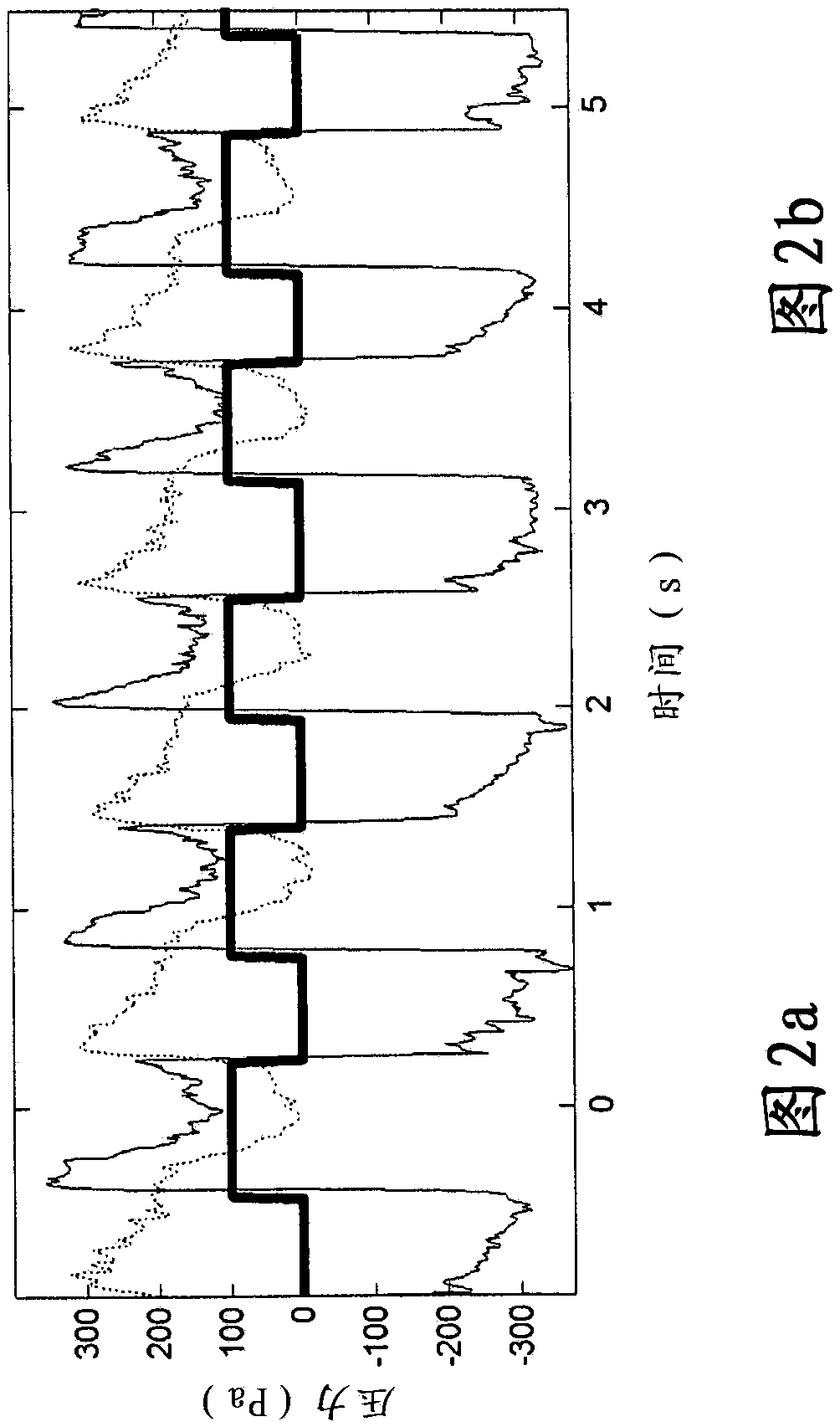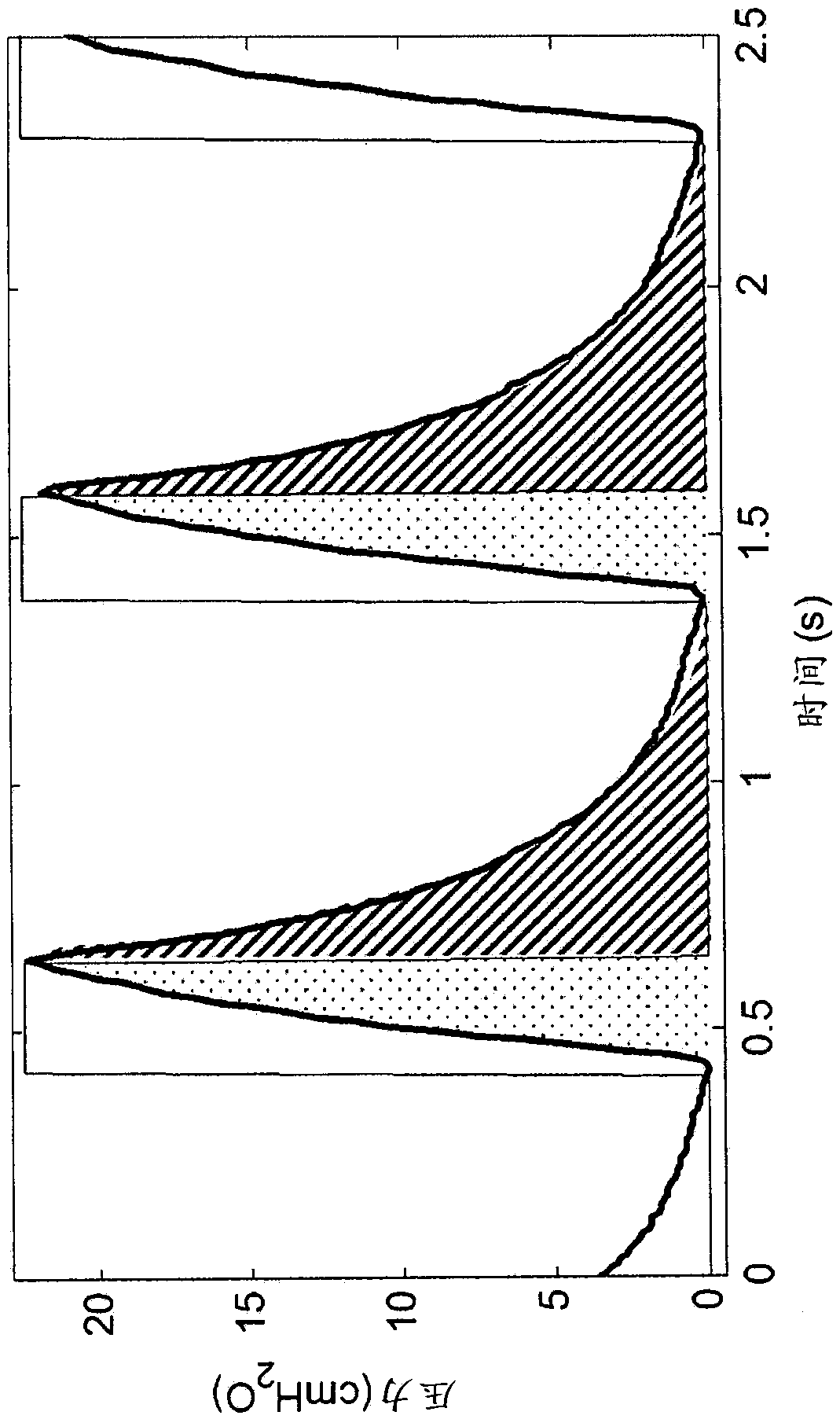Method and system for effective breath-synchronized delivery of medicament to the lungs
A liquid drug and breath detection technology, which is applied in the direction of drug devices, respirators, nebulizers for treatment, etc., can solve the problems of long delay of surfactant, time-consuming, long time of drug pressure rise, etc., to achieve hygienic and Safe handling, low cost effect
- Summary
- Abstract
- Description
- Claims
- Application Information
AI Technical Summary
Problems solved by technology
Method used
Image
Examples
specific Embodiment approach
[0061] Referring to the drawings, there are shown implementations of methods and systems according to preferred embodiments of the present invention. In the examples discussed herein, the problem of delivering the correct amount of aerosolized drug to a patient is dealt with: specifically, administering pulmonary surfactant to, eg, premature neonates. The pulmonary surfactant used was alpha phosphate, formulated as an 80 mg / ml aqueous suspension and commercially available from Chiesi Farmaceutici SpA.
[0062] However, any pulmonary surfactant currently used or later proposed for use in the respiratory distress system and other pulmonary conditions may be suitable for use in the present invention. These include modified natural, artificial and reconstituted pulmonary surfactants (PS).
[0063] Current modified natural lung surfactants include, but are not limited to: bovine lipid lung surfactant (BLESTM, BLES Biochemicals Inc., London, Ontario), calfactant (InfasurfTM, Forest...
Embodiment 2
[0171] A possible way to detect breathing phases is Figure 12 The method shown in:
[0172] The P measurement is the sum of the surfactant flow generated by intermittent activation of the infusion pump plus the pharyngeal pressure generated by spontaneous breathing activity. Due to the high hydrodynamic resistance of the nebulizing catheter to the flow of surfactant, the pressure generated by infusion pump activation is usually much higher than the pressure generated by respiratory activity (in some embodiments, it can be as high as 10 times).
[0173] Example 2 is based on the consideration that the respiratory activity recorded on the pressure signal on the surfactant line during motor startup may be masked by the pressure drop caused by the surfactant flow, whereas, when the infusion pump is inactive, the respiratory activity Signals are easily detected. Therefore, pump activation is initiated by detecting the onset of inspiration on the surfactant line (eg, cessation o...
Embodiment 3
[0209] Example 3 discloses a solution that allows detection of the end of inspiration and the end of expiration.
[0210] Example 3: Reconstructing the entire breathing signal
PUM
 Login to View More
Login to View More Abstract
Description
Claims
Application Information
 Login to View More
Login to View More - R&D
- Intellectual Property
- Life Sciences
- Materials
- Tech Scout
- Unparalleled Data Quality
- Higher Quality Content
- 60% Fewer Hallucinations
Browse by: Latest US Patents, China's latest patents, Technical Efficacy Thesaurus, Application Domain, Technology Topic, Popular Technical Reports.
© 2025 PatSnap. All rights reserved.Legal|Privacy policy|Modern Slavery Act Transparency Statement|Sitemap|About US| Contact US: help@patsnap.com



